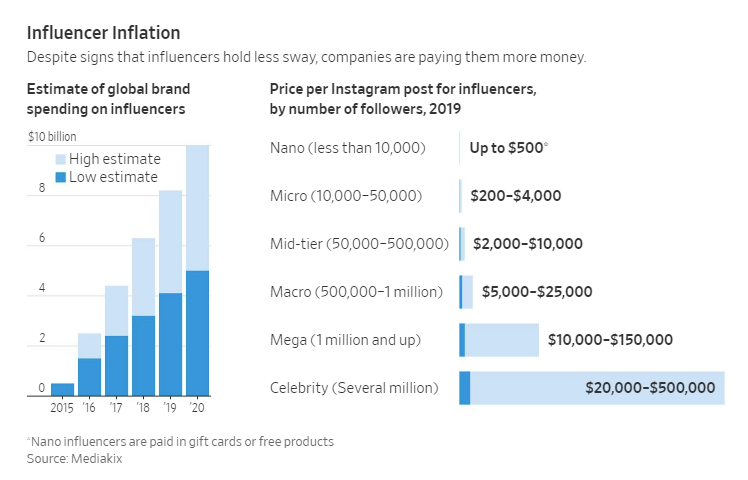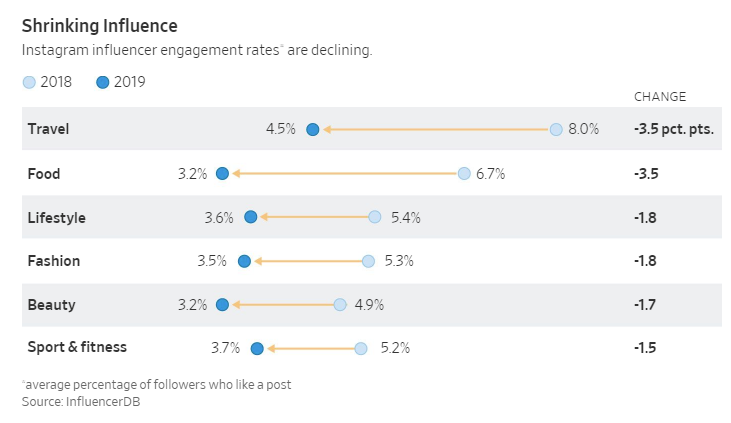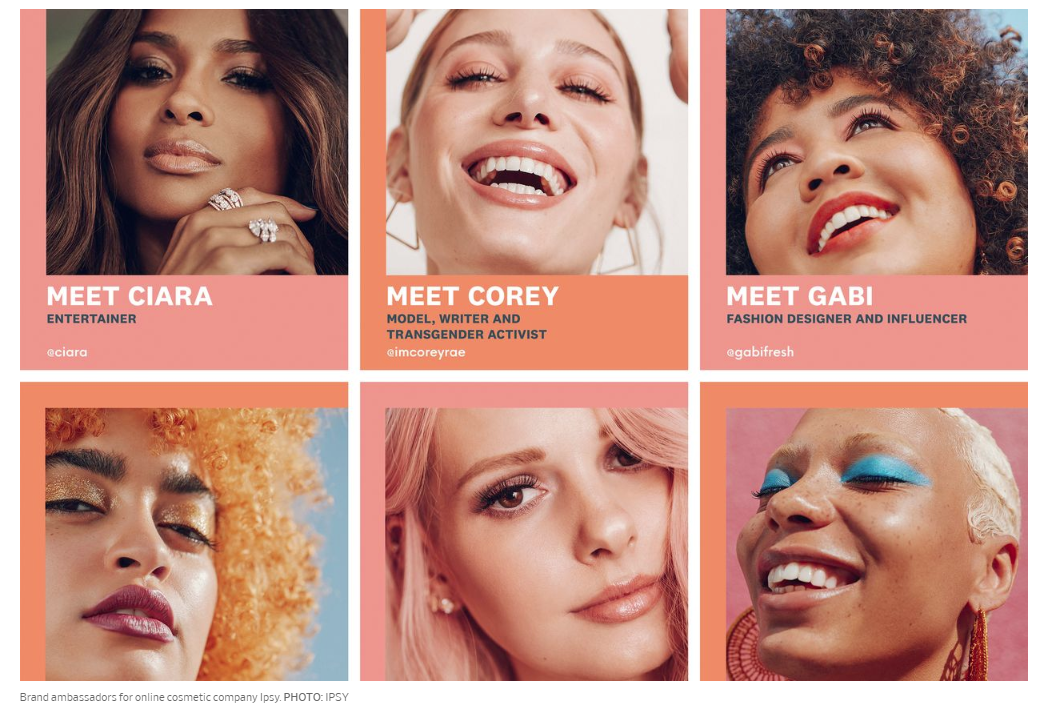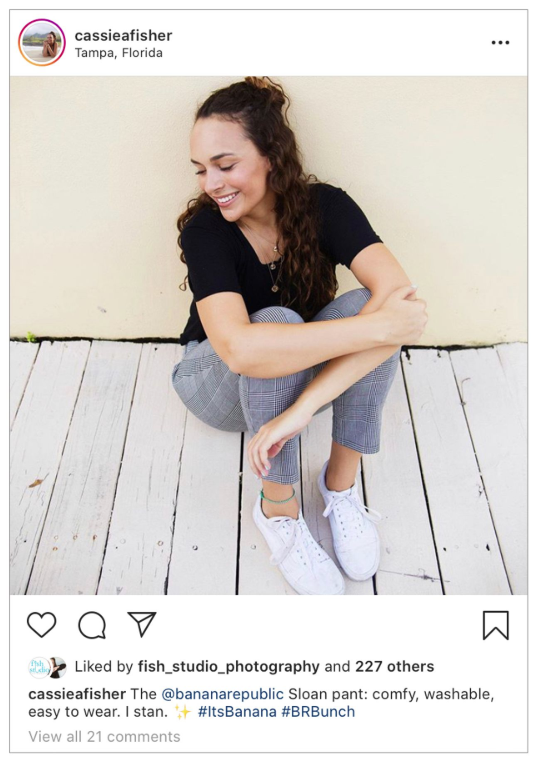“The Bubble Is Starting To Burst” For Online Social Media Influencers
One of the first brands to ever use social media influencers for advertising, Ipsy, is again leading the way – but this time, in pulling back from social media, according to the Wall Street Journal.
Brands like Ipsy are left questioning whether or not the advertising is worth it, since they have no way to measure sales or verify how many people see ads. Influencer advertising and sponsored content, meanwhile, has become the equivalent of a 30 second TV spot, with big name stars getting as much as $100,000 or more for a single ad.
But now there is an air of deceit over the marketplace, as many influencers have inflated their follower counts by buying fake followers by the thousands. Influencers have also damaged their credibility with their followers by promoting products that they don’t use.
JaLynn Evans, a 19-year-old student at Virginia Commonwealth University said:
“All these paid posts make you question whether influencers are genuine or just doing it for the money.”
We hate the disappoint you, JaLynn, but you’re probably not going to like the answer…
This loss of trust has undermined the power of influencers. Marcelo Camberos, Ipsy’s chief executive said: “Have they peaked? I don’t know.”
And it’s also difficult to track how well influencer ads perform. One way to track, monitoring the number of “likes” a post generates as a percentage of the account’s followers, is showing that engagement is waning.
Anders Ankarlid, chief executive of online stationery retailer A Good Company, said: “Consumers can see if someone honestly cares about a product or whether they are just trying to push it. The bubble is starting to burst.”
But advertisers can’t ignore social media outright. Instagram has 1 billion monthly users and it is estimated that companies will spend $4.1 billion and $8.2 billion globally on influencers in 2019. This is up from $500 million in 2015, but still just a fraction of the $624.2 billion in total that companies will spend on advertising this year.
Walmart began adding influencer posts to its website this year and last year, Unilever warned that fraud “undercut the power of influencers” – right before its investment arm bought a stake in a software company that helps brands oversee influencer campaigns.
But the money paid to influencers continues to climb by about 50% each year since 2017. Prices per Instagram post range from $200 for an influencer with as little as 10,000 followers, to more than $500,000 for celebrities with millions of followers.
One lawsuit filed this year gave a glimpse into exactly how much celebrity influencers are paid. Ariana Grande sued Forever 21, Inc. for allegedly stealing her likeness after she rejected an endorsement deal with the retailer. Grande has 165 million Instagram followers and the lawsuit claimed that “…the market value for even a single Instagram post by Ms. Grande is well into the six figures.”
Akash Mehta, an influencer with 293,000 Instagram followers was offered $10,000 for a single post and has been paid by brands like Volvic Water and Ulysse Nardin in the past. Hilariously, he claims that the offer, which was five times his $2,000 asking price, “was a turning point” and that it made him “realize that influencer marketing has gone wrong.”
But of course, this didn’t stop him from accepting the payment.
Meanwhile, HypeAuditor, an analytics firm, investigated 1.84 million Instagram accounts and “found more than half used fraud to inflate the number of followers.”
“When you pay for a billboard, you know roughly how many people will see it. With Instagram you have no idea. Followers can be bought,” Mehta said.
Click farms sell followers and employ people to inflate online traffic. You can buy 1,000 bogus YouTube followers for as little as $49. On Facebook, 1,000 followers will cost you $34 and on Instagram, it’ll cost you $16.
Influencer deception will cost advertisers $1.3 billion this year.
Matteo Del Vecchio, chief executive of Alexis Bittar’s parent company, Deconic, which is owned by Brooks Brothers said: “We scaled back paying for posts. It’s difficult to quantify how that translates into sales.”
And so, instead, companies like the Gap and Banana Republic are now trying to tap into their own customer base, offering real life shoppers $150 gift cards to pose with their favorite branded outfits on Instagram. One customer who was recruited, 21 year old Cassie Fisher, said: “My friends and I are sick of being sold things all the time. When you scroll through your Instagram feed, it’s one sponsored post after another.”
But money talks, bullshit walks: like Mehta, this didn’t stop her from posting a photo of herself wearing Banana Republic pants.
Advertising executive James Cole said: “When Instagram started, it was a place you looked at images posted by your friends or other people you trusted. Brands ruined it by injecting their own messages. Consumers are wising up to the fact that just because an influencer posts about a product doesn’t mean they actually like it.”
You can read the full longform WSJ writeup here.
Tyler Durden
Mon, 10/21/2019 – 11:31
via ZeroHedge News https://ift.tt/2Brwrka Tyler Durden



